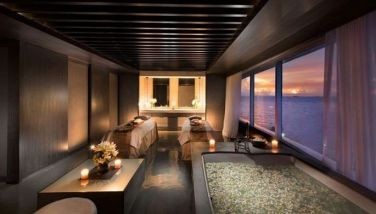Counting on the Hundred Islands
January 13, 2007 | 12:00am
 I’m taking a break this week from my series on "Invisible Filipino Architects." The stream of feedback has not stopped. I will continue next week since recurring themes and issues have emerged from all over, reflecting an urgent agenda for Philippine architecture and its practitioners and the public who can benefit from Filipino architects’ creativity and talent.
I’m taking a break this week from my series on "Invisible Filipino Architects." The stream of feedback has not stopped. I will continue next week since recurring themes and issues have emerged from all over, reflecting an urgent agenda for Philippine architecture and its practitioners and the public who can benefit from Filipino architects’ creativity and talent.
Speaking of local architecture and the importance of design in our cities and countryside, I visited Pangasinan recently (specifically the city of Alaminos) to look at an almost forgotten tourist destination of the recent past – the Hundred Islands.
In the 1950s to the early 1970s and way before Boracay, Manilans had only two options for beach leisure and adventure: Batangas in the south and the Hundred Islands in the north. The tourist postcards of the era featured both destinations and the quaint little resorts that dotted them.
The Hundred Islands are a cluster of 123 islets in Lingayen Bay, famous for being the place where General Douglas MacArthur’s forces landed to retake Luzon in January 1945. The bay is of great environmental importance as a repository of diverse marine life – and is, of course, threatened (what place isn’t in the Philippines?).
The islands are now under the jurisdiction of the city of Alaminos, the business and economic center of western Pangasinan, which has put the recovery of the islands’ marine ecosystem as a priority. The city, under Mayor Nani Braganza, just turned four and has risen in the ranks to become the fourth largest economy in the province. It recently hired well-known master planner Jun Palafox to help set a vision for the city and the Hundred Island’s physical development with a comprehensive land-use plan and a master tourism plan.
The Hundred Islands National Park (it was one of the first to be established as a marine national park in the Philippines) is a key element in this plan. It used to be popular in the ‘60s because it was close to the US military bases but with their closure, tourism declined.
This forced locals to tap marine resources as a source of livelihood and led to the deterioration of the marine ecosystem.
Hopefully, with the new program to resurrect the destination, all this can be corrected and a key contributor to the city (and the province’s) economy will be established. The city has established a Coastal Resources Management Program, combining stewardship, rehabilitation, conservation and protection, along with economic options to ease the pressure on the marine ecosystem.
The trip to Alaminos was a breeze. The NLEX has really made much of Pangasinan (and actually the rest of northern Luzon) accessible to potential tourists. The city of Alaminos itself still has good architectural character. Numerous heritage houses, the church and some public spaces are still in good condition and should be conserved as part of the local legacy. I took a self-guided walking tour and found about a dozen good examples of bahay-na-bato along with other structures of interest. The central plaza is still intact and the church retains much of its original character.
The roads leading to the bay are good and once there, I found a host of potential sites for tourism development aside from the Hundred Islands. Several kilometers of beach with magnificent setting-sun views are accessible by bayside road. The city of Dagupan is nearby along with another forgotten destination – Bolinao.
I took a ride around the Hundred Islands and noted that most of them were still intact while others seem to have been developed with cabanas and small resorts with little thought to proper planning or good design. The little port area, from where we took the ride, could stand better planning with opportunities for a boardwalk and a restaurant row a good idea. Lunch was a fantastic feast of seafood, of course.
Apparently the city is planning to re-brand the Hundred Islands. Plans call for a marine theme park with inter-island floating "bridges," a marine institute, and other features. The development aims to establish it as an ecological theme park with educational components.
Let’s hope that all these plans push through. Tourism really is a key industry in the future of all our islands, not just the hundred in Lingayen Bay. The whole country needs re-branding, the conservation of both built and natural heritage as well as proper physical planning to address both tourism and the more important matter of sustainable development.
BrandSpace Articles
<
>



















